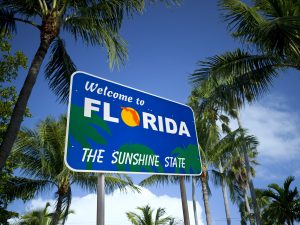Today, our colleagues Jenny Sheng and Julian Zou published a client alert discussing China’s recent restrictions on outbound investments by Chinese companies in certain industries. Among other things, they encourage Chinese firms and foreign investors engaged in overseas investments to be aware of these new trends and to prepare to adjust their strategic plans and overseas activities. The alert is titled China’s Recent Restrictions on Outbound Investments by Chinese Companies.
Potential And Contingent Penalties Are Not Obligations Under The False Claims Act
On December 13, the U.S. Court of Appeals for the Fifth Circuit decided the case of United States of America, e ex rel. Jeffrey M. Simoneaux v. E. I. duPont de Nemours & Company. Reversing the district court, the Fifth Circuit held that “potential or contingent penalties” are not obligations under the federal False Claims Act (FCA) and they are not obligations under the FCA “even when a statute requires immediate action from a violator,[because] the Government must still choose whether to impose a penalty.” Continue Reading ›
Criminal Indictment Precluded After Loss In Civil Action
On December 12, the U.S. Court of Appeals for the Seventh Circuit issued a ruling holding that a lower court’s decision dismissing the federal government’s civil claim that the defendants were at fault in connection with a spill of clarified slurry oil had preclusive effect upon the government’s later-filed criminal enforcement case in the same matter. The case is U.S. v. Egan Marine Corporation and Dennis Michael Egan. Continue Reading ›
Water Infrastructure Improvements for the Nation Act — Highlights
Below is a snapshot of the Water Infrastructure Improvements for the Nation Act  (S. 612) passed late last week by the Congress. The President has indicated that he will sign the bill.
(S. 612) passed late last week by the Congress. The President has indicated that he will sign the bill.
10th Circuit: NM Laws Purporting To Authorize “Self-Help” Preempted
On December 8, the U.S. Court of Appeals for the Tenth Circuit decided the case of United States v. Board of County Commissioners of Otero County, New Mexico. The Tenth Circuit held that a New Mexico statute and resolution adopted by the Otero County Board of County Commissioners (Board) which purported to authorize the Board to take unilateral steps to mitigate the fire dangers posed by very dry conditions in the Lincoln National Forest were preempted by federal law. The Tenth Circuit, affirming the lower court, ruled that the Property Clause of the U.S. Constitution authorized the federal government to promulgate rules governing the use of the national forests and, insofar as local laws intended to abate these dangers conflicted with federal law, they were preempted.
Florida, Sebo and the Concurrent Causation Doctrine
The Florida Supreme Court recently issued a widely reported decision, Sebo v. American Home Assurance Co., which applied the concurrent cause doctrine in ruling that an all-risk homeowner’s insurance policy provides coverage when damage is the result of multiple events—so long as at least one of them is a covered peril. Plaintiff John Sebo purchased a home, which he insured under an all-risk homeowner’s policy written by American Home. As an “all-risk” policy, it provided coverage for damage to property caused by all perils, except those it explicitly excluded. Design defects and faulty construction were among the excluded perils. Within less than two months of buying the house, Mr. Sebo discovered major leaks during rainstorms, which were later found to be the result of design defects and faulty construction. Hurricane Wilma then caused even more damage. When Mr. Sebo sought coverage for damage from the water intrusion, American Home denied most of the claim on the grounds that it was caused by design defects and faulty construction—which were excluded perils. But the Florida Supreme Court found coverage.
9th Circuit Rejects NEPA Challenges To Planned 1.9-Mile Underground Light Rail Extension Project in Downtown LA
On December 6, the U.S. Court of Appeals for the Ninth Circuit, in the case of Japanese Village, LLC v. Federal Transit Administration, et al., affirmed the district court’s grant of summary judgement to the government defendants following a painstaking review of the National Environmental Policy Act (NEPA) arguments lodged by Japanese Village, LLC and Today’s IV, Inc. dba Westin Bonaventure Hotel (Bonaventure) against the construction of the Regional Connector Transit Corridor Project, a 1.9-mile light rail extension line in downtown Los Angeles.
EPA’s List of Chemicals Subject to Risk Assessment Continues
Today, our colleagues Kevin Ashe and Rebecca Lee published an alert on the Environmental Protection Agency’s recent listing of certain chemicals as subject to review for risks to human health and to the environment. EPA’s actions follow recent amendments to the Toxic Substances Control Act requiring it to timely complete risk assessments for chemicals manufacture, distributed and imported to the U.S. They encourage companies with U.S. operations to consider the implications if they use chemicals that have been list or may be listed by the EPA. The alert is titled Toxic Substances Control Act Overhaul.
Ninth Circuit Rules Surface Transportation Board Has Exclusive Jurisdiction Over Certain Railroad Repair Work
On November 23, 2016, the U.S. Court of Appeals for the Ninth Circuit issued a unanimous ruling that the Surface Transportation Board has exclusive jurisdiction over “railroad repair work done at the direction of a federally regulated rail carrier but performed by a contractor rather than the carrier itself.” The case is Oregon Scenic Coast Railway, LLC v. State of Oregon Department of State Lands. Continue Reading ›
Cal CSLB Registrar of Contractors and Chief Deputy Registrar Announce Pending Retirement
On November 29, the California Contractors State License Board (CSLB) issued an Industry Bulletin via email announcing that Cindi A. Christenson, the CSLB’s current Registrar of Contractors, will be retiring effective May 1, 2017. Christenson, the CSLB’s first female Registrar, was appointed to this position on January 1, 2015. Prior to her appointment as the Registrar, Christenson served for six years as CLSB’s Chief Deputy Registrar. A nationwide executive search for Christenson’s replacement is in process.





